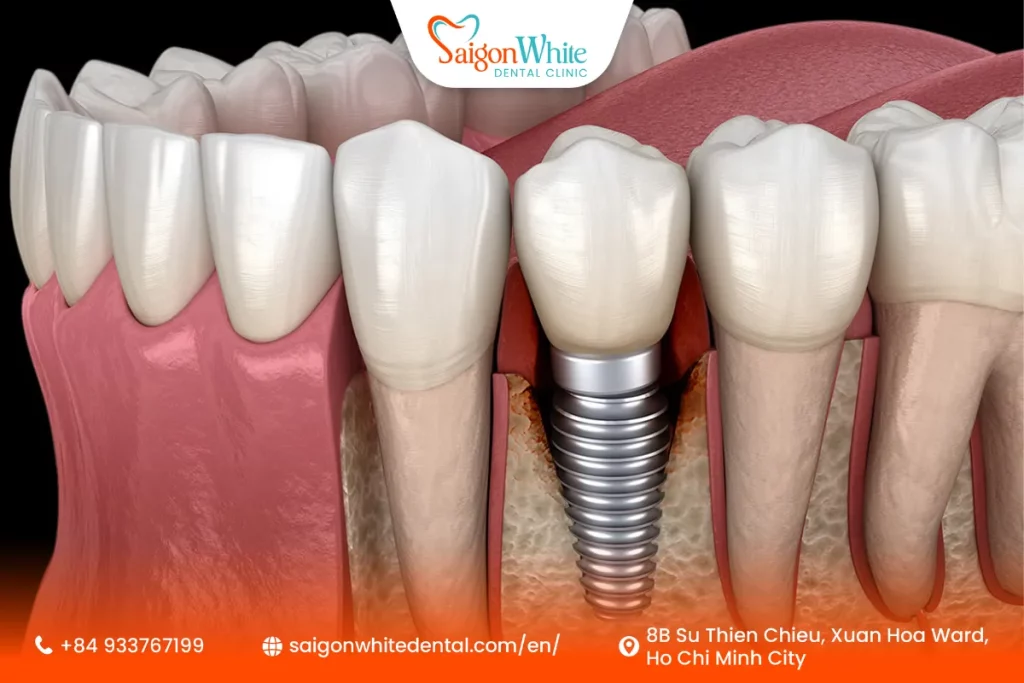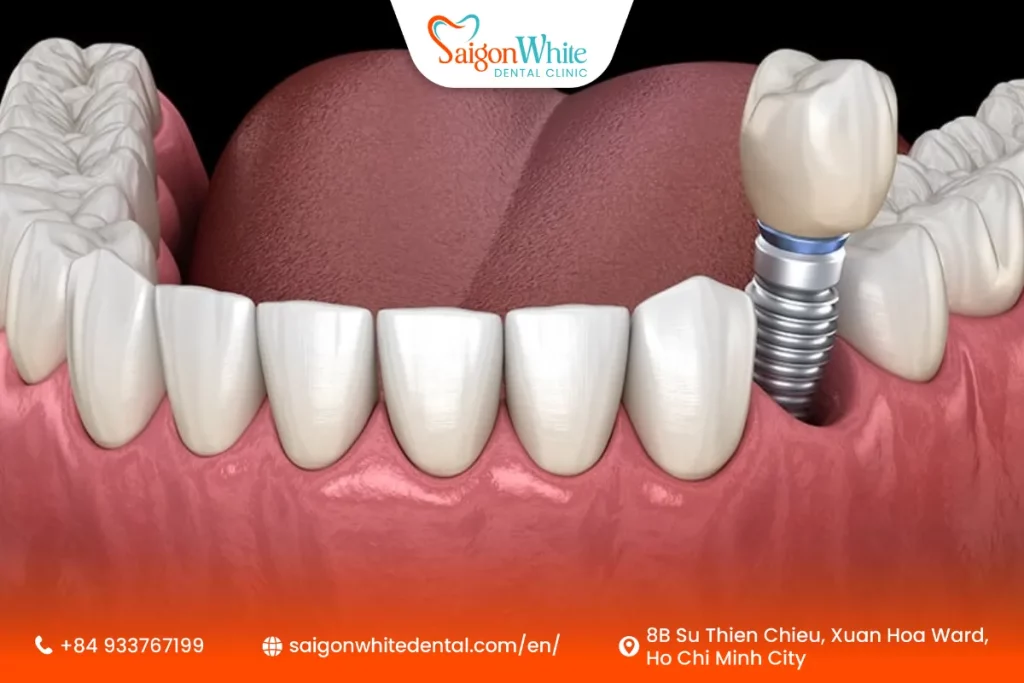Dental implants are considered one of the most reliable and long-lasting solutions for missing teeth. They restore your smile, improve chewing function, and are designed to feel and function like natural teeth. However, if your dental implant feels loose, it can be alarming and uncomfortable.
This comprehensive guide will help you understand why it happens, what to do, and how to prevent further complications.

Is It Normal for a Dental Implant to Feel Loose?
No, it’s not normal for a dental implant to feel loose. A healthy implant should feel like a natural tooth — firm and immovable. Unlike dentures, implants are anchored directly into the jawbone, which provides stability. If you notice even the slightest movement, it’s a sign that something is wrong and needs professional attention.
Before panicking, it’s important to distinguish between the implant itself and the components attached to it. A loose crown, abutment screw, or healing cap might feel like a loose implant, but could be easily fixed by your dentist without needing major treatment.
Common Causes of a Loose Dental Implant

Understanding the root cause of the issue is crucial for determining the proper solution. Here are some common reasons your dental implant may feel loose:
Loose Crown or Abutment Screw
Sometimes, the dental crown (the visible part of the tooth) becomes detached, or the abutment screw (which connects the crown to the implant post) loosens. This is the most common cause of the sensation of a “loose implant.”
Good news: This does not mean the implant itself is failing.
It’s typically a quick fix by your dentist — they can retighten the screw or replace the crown if necessary.
Bone Loss Around the Implant
For an implant to remain stable, it must integrate with the jawbone — a process called osseointegration. If the surrounding bone deteriorates due to aging, poor oral hygiene, or infection, the implant can begin to shift.
This issue is more serious, as bone loss weakens the support structure.
Peri-Implantitis (Infection Around the Implant)
Peri-implantitis is a bacterial infection that affects the gum and bone around the implant. It’s similar to gum disease and can lead to bone loss and implant failure if untreated.
Symptoms include:
- Swollen or bleeding gums
- Pain or tenderness
- Bad breath or pus discharge
- Loosening of the implant
Trauma or Excessive Bite Force
A sudden impact, biting down on hard foods, or chronic teeth grinding (called bruxism) can compromise the stability of your implant. Over time, repetitive force can loosen the implant or surrounding components.
Failed Osseointegration
Sometimes the implant never fully bonds with the bone during the healing process. This is often due to:
- Poor bone quality
- Smoking
- Certain medications or health conditions
If osseointegration fails, the implant becomes mobile and must be removed.
Warning Signs That Require Immediate Dental Attention
If your dental implant feels loose, don’t wait. Here are signs it’s time to contact your dentist immediately:
- The implant moves when you touch it
- Persistent pain or throbbing
- Swelling, redness, or bleeding at the implant site
- Bad taste in your mouth (possible infection)
- Pus discharge
- Fever or overall discomfort
Even if the discomfort is mild, a professional evaluation is crucial. The earlier the problem is detected, the better your chances of saving the implant.
What to Do Immediately If Your Implant Feels Loose
If your dental implant starts to feel loose, it’s essential to act quickly but carefully. Taking the right steps immediately can help prevent further damage and increase the chances of saving the implant. Here’s what you should do:
Do Not Touch or Wiggle the Implant
As tempting as it may be, avoid moving the implant with your fingers or tongue. Any additional movement can worsen the condition, damage surrounding tissues, or introduce bacteria into the area.
Stop Chewing on That Side
Switch to soft foods and avoid using the side of your mouth where the implant is located. Hard, crunchy, or sticky foods could stress the implant site and make it worse.
Rinse with Warm Salt Water
Mix 1/2 teaspoon of salt with a cup of warm water and rinse gently. This can help reduce bacteria and soothe inflammation without irritating the implant site.
Maintain Gentle Oral Hygiene
Continue brushing and flossing, but be extremely gentle around the implant. Use a soft-bristle toothbrush and avoid aggressive rinsing or flossing that could disturb the area.
Avoid Smoking and Alcohol
Smoking and alcohol can slow down healing and increase the risk of infection. Until your implant is checked, it’s best to avoid both completely.
Do Not Delay — Contact Your Dentist Immediately
The most important step is to call your dental clinic right away. A loose implant can be a sign of a minor issue (like a loose crown) or something more serious (like bone loss or infection). Only a dental professional can make that diagnosis and provide the appropriate treatment.
How Dentists Diagnose and Treat a Loose Implant
A dental professional will use several diagnostic methods to determine what’s causing the looseness and how to fix it.
Clinical Examination
- The dentist will inspect whether the implant, crown, or abutment is loose.
- They may gently attempt to move the implant and ask about your symptoms.
Dental X-rays or 3D Imaging
- X-rays help assess bone levels around the implant and detect signs of infection or bone loss.
Treatment Options Based on the Cause
Loose Crown or Screw
- If only the crown or screw is loose, your dentist can retighten or replace it.
- Often, no surgery is needed.
Minor Bone Loss
- Mild bone loss might be addressed with deep cleaning, antibiotics, or adjustments to your bite.
- Early-stage peri-implantitis can be reversed.
Moderate to Severe Bone Loss
- May require bone grafting, flap surgery, or removal of the implant.
- After healing, a new implant may be placed if the site is viable.
Failed Implant
- In cases of failed osseointegration or major infection, the implant must be removed.
- The area is cleaned, and after several months of healing, a new implant can be placed.
Can a Loose Dental Implant Be Saved?
In many cases, yes — a loose dental implant can be saved, but it depends on the underlying cause and how early the issue is addressed.
When a Loose Implant Can Be Saved:
Loose Crown or Abutment
- If the implant post (the screw in your jaw) is still stable and only the crown or abutment is loose, it’s usually a simple fix.
- Your dentist can tighten or replace the screw or crown without removing the implant.
Mild Bone Loss or Inflammation
- If detected early, issues like peri-implant mucositis (early gum inflammation around the implant) can be treated.
- Non-surgical treatment, cleaning, and antibiotics may help stop progression.
When a Loose Implant Cannot Be Saved:
Severe Bone Loss or Infection (Peri-Implantitis)
- If the infection has caused significant damage to the surrounding bone, the implant may lose its support and need to be removed.
- In some cases, bone grafting may be required before placing a new implant.
Failed Osseointegration
- If the implant never properly fused with the bone (common in early failure), it will remain mobile and unstable.
- It often needs to be removed and possibly replaced after healing.
How to Prevent Dental Implants from Becoming Loose
Prevention starts with good habits and regular checkups. Here’s how to protect your implant investment:
Practice Excellent Oral Hygiene
- Brush twice daily and floss around the implant.
- Use a soft-bristle toothbrush and non-abrasive toothpaste.
Schedule Regular Dental Check-Ups
- Routine exams help detect problems early, before they become serious.
- Your dentist may recommend professional cleaning around implants every 3–6 months.
Stop Smoking
- Smoking restricts blood flow and increases the risk of implant failure.
Use a Night Guard If You Grind Teeth
- Bruxism places excess pressure on implants.
- A night guard can protect your teeth and prevent movement.
Avoid Hard or Sticky Foods
- Especially in the healing phase, avoid foods like nuts, hard candies, or caramel.
When to See a Dentist: Emergency vs Routine
You should never ignore a loose dental implant. Here’s when to take action:
| Symptom | Action |
| Slight movement or discomfort | Call the dentist immediately |
| Pain, bleeding, or swelling | Emergency appointment |
| Implant falling out or pus present | Urgent care required |
Prompt action can often mean the difference between saving and losing your implant.
Conclusion
A loose dental implant is a red flag that should never be ignored. While not always an emergency, it’s always a reason to visit your dentist — the sooner, the better.
Whether it’s a loose crown, an infection, or bone loss, modern dentistry offers a wide range of solutions to restore stability and protect your oral health.
If you’re currently experiencing implant issues or want to ensure your implant stays healthy long-term, don’t wait. Book an appointment today and let a qualified implant dentist assess your situation.
Worried About Your Dental Implant?
At Saigon White Dental Clinic, our experienced implant specialists provide thorough evaluations, fast treatment, and caring support. Whether you’re dealing with a loose crown or more serious implant complications, we’re here to help.
=> Visit us in Ho Chi Minh City
=> Book your appointment today!

 Telegram
Telegram